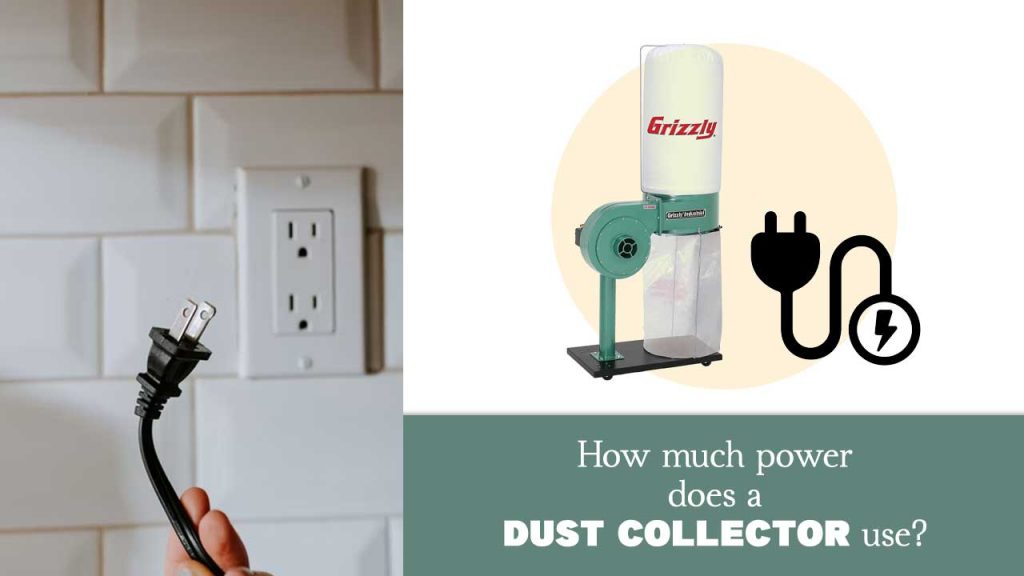Dust collectors have proven to be a very important addition in residential and industrial settings as they help to remove dust in the environment and replace them with cleaner air.
They are very powerful tools equipped with bags that are used to store the dust pulled out of the room or space before it is disposed of appropriately.
As a result of the heavy lifting that these collector bags have to do, many owners often wonder if they need to be washed. You may also have asked at some point, “are dust collector bags washable?”.
Dust collector bags are different and they can be made from a variety of materials. These include polyester bags, cotton bags (which are woven), acrylic, nylon, and even polypropylene.
| Photo | Popular Air Purifiers | Price |
|---|---|---|

|
Air Purifiers for Home Large Room up to 1500ft², Tailulu H13 True HEPA Air Purifier for Pets Dust Odor Smoke, Air Purifier for Bedroom with 15dB Quiet Sleep Mode for Bedroom Office Living Room | Check Price On Amazon |
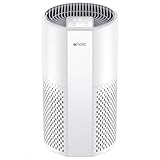
|
Afloia Air Purifier for Home, 4-in-1 Washable Filter for Allergies, Covers Up to 1076 ft², Quiet Operation, Auto Shut-Off & Night Light, Removes Pet Dander, Pollen, Dust, Mold, and Smoke, White,Pluto | Check Price On Amazon |

|
Nuwave OxyPure ZERO Air Purifier with Washable and Reusable Bio Guard Tech Air Filter, Large Room Up to 2002 Ft², Air Quality Monitor, 0.1 Microns, 100% Capture Irritants like Smoke, Dust, Pollen | Check Price On Amazon |

|
Air Purifiers for Home Large Room Up to 1,996 Ft², EOEBOT Air Purifier for Home Pets with Washable Filter, Quiet Sleep Mode, Air Quality Monitor, Air Purifier for Bedroom, Pet Hair, Dust, Smoke, White | Check Price On Amazon |

|
Afloia 2 IN 1 Air Purifier with Humidifier Combo, 3-Stage Filters for Home Allergies Pets Hair Smoker Odors, Evaporative Humidifier, Auto Shut Off, Quiet Air Cleaner with Seven Color Light,White | Check Price On Amazon |
It is important to note that the material used in producing the dust bag can be a big factor to decide whether or not it can be washed. We’ll find out all the details shortly as we attempt to answer all the questions you may have.
What Are Dust Collector Bags Made Of?
There are different materials that are used to make dust collector bags, and these include;
1. Cotton
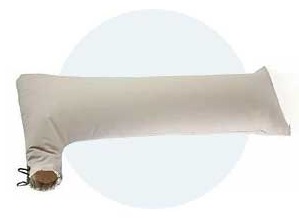
This is one of the common types of collector bags you’ll find out there.
When used in dry and ambient environments, cotton bags can offer very good chemical resistance, but can also be quite flammable, so they should not be used where oxidizing agents and mineral acids are present.
Flat and flex abrasion won’t also be a problem with cotton bags.
Cotton also has a recommended operating temperature of 180°F and is great for many types of applications, including woodworking factories, cleaning rooms, cement and rock-product factories, and even atmospheric air cleaning, among others.
2. Polyester
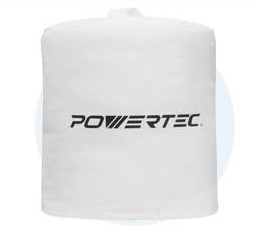
Polyester is the most used type of collector bags today. It can work well in temperatures up to 275°F. Unlike cotton, polyester felts provide really good resistance to abrasion, chemicals, and also dry heat degradation.
They have very good dimensional stability and are a superior type of synthetic material for collector bags. You should watch it though, polyester won’t do well with moist heat and can suffer hydrolytic degradation in certain circumstances.
Polyester is resistant to most organic and mineral acids, except when acids like nitrate, sulfur, and carboxylic acids are in high concentrations.
Oxidizing agents and organic solvents won’t also affect a polyester collector bag. You should not use this bag in environments that produce a lot of phenolic compounds and high-temp strong alkalis.
3. Polypropylene
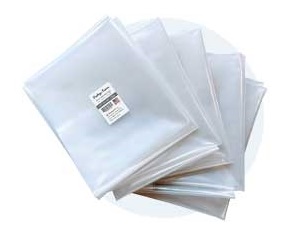
Polypropylene is a choice option due to its strength and excellent resistance to alkalis and acids.
It has an operating temperature of 170°F. It has very smooth fibers which allow for pretty good cake release and prevent blinding.
There’s also no moisture absorption here and the polypropylene fabric effectively resists organic and mineral acids and alkalis, except for potassium hydroxide and sodium above 200°F.
4. Acrylic
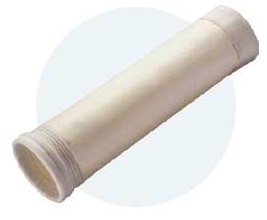
Acrylic bag mediums have a very high-temperature allowance, reaching 275°F. This often comes in the form of homopolymer acrylic felts.
You can use them in electric furnaces, dryers, smelting facilities, and aluminum reduction factories, etc.
Acrylic bags are also pretty resistant to chemical reactions from organic and mineral acids. However, the higher the temperature, the less likely it is to work well.
In terms of resistance to chemical acids, this is superior to polyesters and polyamides. However, it is inferior to many fibers in terms of resistance to alkalis.
5. Nylon
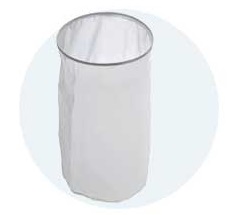
Nylon has a steady operating temperature of 250°F. It is suitable for super abrasive dust applications, due to its very good resistance to alkalis in most cases.
However, you’d need to watch out for oxides which can cause degradation and even partial decomposition.
There are other high-temperature dust bag choices out there, including fiberglass (which can handle temperatures up to 500°F), polyphenylene sulfide (375°F), polyimide (500°F), fluorocarbon fiber (500°F), and several others.
Can You Wash Dust Collector Bags?
It is easy to say No here because we’re concerned about the integrity of the bag and its ability to keep fine dust particles in.
Washing it can affect the strength of the fabric and affect its micron rating because it can affect the dust coating of some dust collector bags.
The idea is that the dust is what covers up the pores of the bag and prevents fine particles from escaping. However, there are some pretty resilient fabrics that can be washed, especially those that have been approved for washing by the manufacturer.
We’ve looked through several products and tested many collector bags. Hence, we’ve come up with this to tell you all you need to know about washing different types of dust collector bags.
Best Way to Wash Different Types of Dust Collector Bags
| Bag Type | Mode of Washing | Instructions |
| Woven Cotton | Handwash | This can be hand washed with cold water, but should not be tumble-dried or exposed to heat. This is because too much heat can affect its integrity and durability. |
| High-efficiency felt | Handwash | Room-temperature water and very low-impact detergent should be used. Avoid hot or cold water as that can be risky. |
| Nylon | Machine Wash | Set on “gentle” wash using cold water. You need to be cautious to prevent the bag from getting caught by an object or other clothes in the machine. |
| Polyester | Machine Wash | It is ideal to use warm water here. You should also wash gently. |
| Acrylic | Machine Wash | Acrylic is highly resistant and enduring, so you can use warm, cold or room temperature water in a washing machine. It is wise to blow compressed air through to remove extra dust particles before you put it in the machine. |
| Polypropylene | Tub Washing | Do not expose to machines. Wash by hand in a tub using warm to slightly hot water. Too hot water can melt it as polypropylene is plastic. |
| Fiberglass | Do Not Wash | Unless absolutely necessary, you should not wash. Spot cleaning can work. Using compressed air at low speed may also do the trick. |
There’s a caveat though. Washing these fabrics won’t damage them but it may gradually affect their performance as you continue to wash them.
To prevent such deterioration, we advise you to find other means of keeping the bags clean and only wash them occasionally, probably once every 6 months.
Also, it’s important to note that washing may only become necessary if other options have failed, and only if a thick crust of dust has been noticed. Another thing is to make sure the manufacturer has indicated that the bag can be washed before you do.
How To Clean Dust Collector Bags?
Cleaning your duct collector bag when you notice a dust cake can be as simple as taping with your hands while the collector is running and the bag is inflated. This should force the clump to drop.
You can also use a broom or a piece of wood to hit it gently. If any of these doesn’t work, then you can use compressed air to force dust and debris cake off the bag’s fabric.
In stubborn situations, this may also not work. It is time to take it off using a vacuum cleaner. Turn the bag inside out and run the vacuum over the cake until it goes off completely.
When all of these options fail, that is when you should consider washing it. Note that this washing should be considered a reset, like starting afresh. Only fabrics meant to be washed should be washed.
How Long Do Dust Collector Bags Last?
A typical dust collector bag will last about 3 to 10 years. The actual lifespan would depend on the quality of the material used, its durability, and the extent of usage.
In many cases, a dust bag is expected to outlive its specified lifespan and go on for years. This also largely depends on how well it is maintained.
There are some signs to look out for to know when a replacement is needed and we’ll come to that much later. If you own a dust collector, just be ready to replace the bags no later than every 5 years, especially if there’s a lot of activity going on.
You may also wonder whether it’s possible to wash and reuse dust bags. Well, let’s get right to it.
When Should a Dust Collector Bag Be Replaced?
Below listed are the important signs and situations that tell you when it’s time to replace your dust collector bag.
1. There are holes in the bag
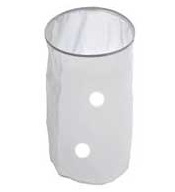
Holes developing in the bag means dust can freely escape and pollute the air all over again. Stitching or patching the bag is not advisable, so you need to replace it when you spot holes.
2. Airflow is obstructed
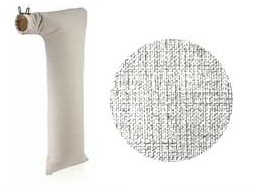
When you use a bag fabric that isn’t washable, the pores can get blocked over time by a thick crust of dust. When this happens, the bag won’t be able to properly store dust because air can’t go through. Replacing it is the way to fix this problem.
3. When some bags are dipped in water
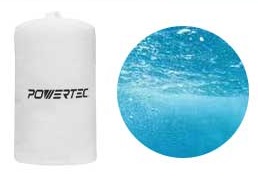
Some bags should not be washed, especially fiberglass and some other types. Water can damage the coating that enhances the micron rating and you’d need a replacement.
4. Abide by regulations
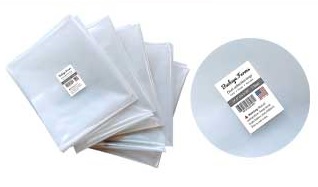
There are conditions that your dust bag would be in that might get you in trouble with regulators. This is because a bad dust bag can cause harmful pollution that can affect people in the area. You should replace the bag before it gets to that point.
5. Stick to lifespan stipulations
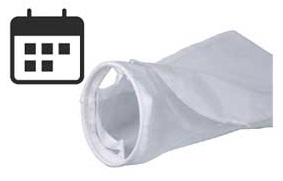
Most dust bags last for between three to 10 years, depending on how often you use them and how much dust needs removing. Generally, it will be unwise to continue to use the same bag for more than 10 years. You’d need to replace it.
6. Replace contaminated bags
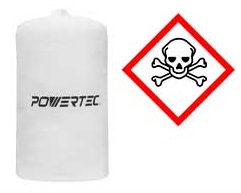
If the bag has been exposed to contaminants, you should replace it so you don’t contaminate the environment you’re trying to clean.
Final Words:
So, can dust collector bags be washed? Yes, most of them can as long as you follow the instructions provided in this post. But, should dust collector bags be washed? We’d have to say No, unless as a last resort.
Water can undermine the micron rating by depleting the inner coating and this reduces the performance and efficiency of the dust collector. Also, be sure to check for signs so you know when it’s time to replace the unit.






